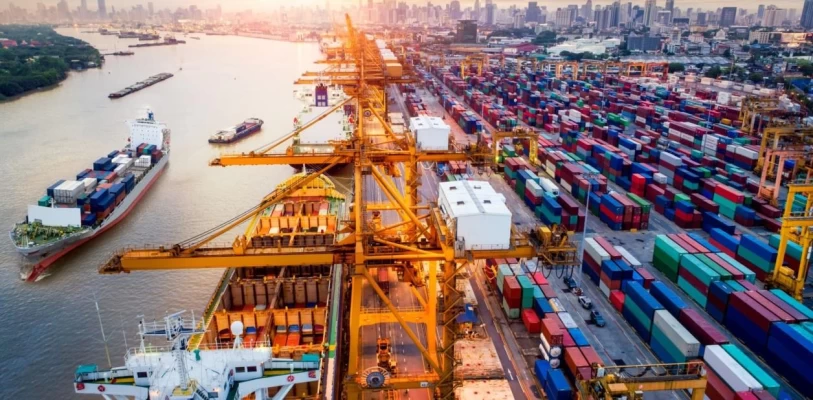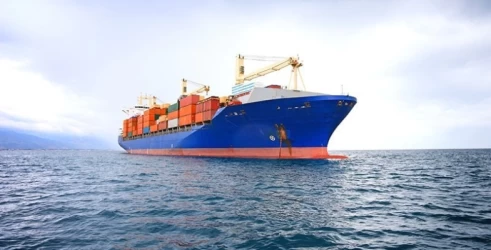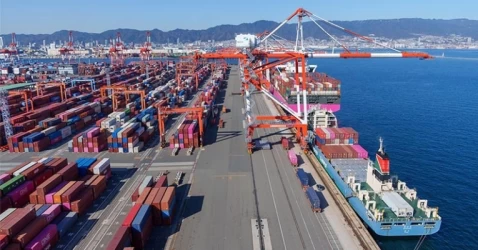Sea freight at Visakhapatnam port
Visakhapatnam Port, located in the southeastern state of Andhra Pradesh, India, is one of the most significant and busiest ports in the country. Also known as "Vizag," it plays a vital role in maritime transport and international trade, serving as a strategic gateway for goods entering and leaving India. This article provides a detailed overview of maritime transport in Visakhapatnam Port, highlighting its historical background, facilities, economic significance, challenges, and future prospects.
Historical Background
Visakhapatnam Port has a rich history, dating back to its establishment in the early 20th century. Initially developed by the British in 1933, the port was created to facilitate trade in minerals and agricultural products. Over the decades, it has evolved into a major commercial hub, with continuous infrastructure development and modernization to meet the growing demands of global trade.
Facilities and Infrastructure
Visakhapatnam Port is a multi-purpose port equipped with modern facilities to handle a variety of cargo types. It is divided into three main terminals: the inner harbor, the outer harbor, and the fishing harbor.
Container Terminal
The container terminal at Visakhapatnam Port is one of the most advanced in India, capable of handling hundreds of thousands of containers annually. This facility significantly contributes to the port’s status as a key container transshipment hub in South Asia.
Bulk Cargo Handling
The port specializes in the handling of bulk cargo, particularly iron ore, coal, and other minerals. Visakhapatnam is one of India's largest exporters of iron ore, catering primarily to markets in East Asia and Europe.
Oil and Chemical Terminals
Visakhapatnam Port also has dedicated terminals for handling crude oil and petrochemical products. These facilities are crucial for ensuring a steady supply of fuel and raw materials to the domestic market, particularly for industries located in the surrounding regions.
Logistics and Connectivity
The port is well-connected to the national highway and rail network, facilitating efficient transportation of goods to and from inland destinations. The robust logistics framework enhances the port's capability to serve as a critical link in the supply chain for various industries.
Economic Significance
Visakhapatnam Port plays a crucial role in India’s economy, significantly contributing to the country’s GDP through trade and commerce. The port handles a diverse range of cargo, making it a vital contributor to the manufacturing and agricultural sectors.
Employment Opportunities
The port and its associated activities provide direct and indirect employment to thousands of individuals in the region. The growth of maritime transport has led to the development of ancillary industries, further boosting the local economy.
International Trade Relations
With connectivity to over 50 international ports, Visakhapatnam serves as a pivotal point for India’s exports and imports. The port facilitates trade with countries in Southeast Asia, Europe, and the Middle East, enhancing India’s position in global trade dynamics.
Challenges
Despite its strategic advantages, Visakhapatnam Port faces several challenges:
Competition from Other Ports
Increased competition from other ports in India and the region poses a challenge to maintaining Visakhapatnam’s market share. Ports like Chennai and Kolkata are also vying for a larger share of maritime trade.
Environmental Concerns
The port's activities have raised environmental concerns, particularly regarding pollution and the ecological impact on the surrounding marine ecosystem. Addressing these issues is essential for sustainable development.
Infrastructure Constraints
While the port has made significant strides in modernization, ongoing improvements are necessary to handle the increasing volume of cargo. Upgrading existing facilities and expanding capacity is critical for meeting future demands.
Future Prospects
The future of Visakhapatnam Port looks promising, with several initiatives planned to enhance its capabilities:
Infrastructure Development
Investment in modern infrastructure, including additional berths, enhanced cargo handling equipment, and expanded storage facilities, is underway to boost the port's capacity and efficiency.
Technological Advancements
Embracing digital technologies and automation will streamline operations and improve efficiency. Implementation of smart port solutions will facilitate better logistics management and reduce turnaround times.
Sustainability Initiatives
Adopting sustainable practices is crucial for the long-term viability of the port. Initiatives aimed at reducing carbon emissions and protecting marine biodiversity will ensure that maritime transport in Visakhapatnam aligns with global sustainability goals.
Conclusion
Visakhapatnam Port is a cornerstone of India's maritime transport and plays a vital role in facilitating international trade. With its strategic location, advanced facilities, and continuous development, the port is poised to enhance its significance in global trade networks. By addressing challenges and leveraging opportunities for growth, Visakhapatnam Port can further solidify its position as a leading maritime hub in South Asia.
If you have any specific questions or need further assistance, feel free to ask!











